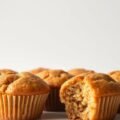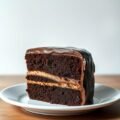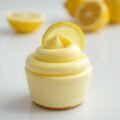Let me paint a picture for you.
It’s a rainy Saturday afternoon and I’m wearing socks that don’t match and an old jumper that smells faintly of last week’s roast. I’m rifling through my recipe binder, looking for something warm and soul-hugging. And there she is-Nigella Lawson. Well, her recipe, not her in person (though how delightful would that be?). Her buttermilk scones aren’t just baked goods; they’re a quiet kind of magic. A British kitchen staple with a soft, slightly tangy crumb and a golden rise that makes you believe in oven alchemy.
These scones aren’t fussy. They don’t demand a Michelin-star technique or ingredients foraged at dawn. They’re generous, forgiving and beautifully old-fashioned in the best sense. And when you slice one open-still warm-and slather it with clotted cream and strawberry jam? That’s not just breakfast. That’s a moment.
Nigella Buttermilk Scones Recipe
Ingredients Needed

Now, let’s get into the bones of it. what you’ll need.
Here’s the thing: Nigella keeps it real. These are ingredients you likely already have in your pantry or can find in your local shop without needing a treasure map.
- Plain flour – 500g (plus extra for dusting). Don’t go reaching for self-raising; we’re making our own lift here.
- Baking powder – 2 teaspoons. This is your sky-rise in scone form.
- Bicarbonate of soda – ½ teaspoon. Partners with the buttermilk to give the scones their tender puff.
- Salt – a pinch or two. Balance is everything.
- Caster sugar – 1 teaspoon. Just a whisper of sweetness.
- Unsalted butter – 100g cold, diced. The colder, the better. It’s the fat that gives that flaky-soft crumb.
- Buttermilk – 300ml. This is the soul of the scone. Tangy, creamy and key to that tender texture.
- Milk – a little, for brushing. This gives you that burnished, golden top.
That’s it. No eggs, no mystery. Just a simple lineup that becomes more than the sum of its parts.
Equipment Needed
You don’t need a state-of-the-art kitchen to pull these off. Honestly, half the time I use a wine bottle as a rolling pin (don’t judge).
- Large mixing bowl – Big enough for floury fingers to get involved.
- Sieve – For the flour and raising agents.
- Pastry cutter or fingertips – Your choice. I love using my fingers; it feels more connected, more “me and the dough are one”.
- Rolling pin – Or your wine bottle as mentioned.
- 5cm round cutter – Though I’ve been known to use a drinking glass in a pinch.
- Baking tray – Lined with parchment, because nobody likes a stuck scone.
- Pastry brush – For that lovely milk-gloss finish.
That’s it. No electric mixers, no silicon wizardry. Just you, your hands and a bowl.
Instructions To Make Nigella Lawson’s Buttermilk Scones
Here’s where the flour flies. Let me walk you through it like you’re beside me at the counter.
- Preheat your oven to 220°C (200°C fan), gas mark 7. This needs to be hot-scones love a blast of heat to get that rise.
- Sift the flour, baking powder, bicarb, salt and sugar into a large bowl. It’s like laying a soft, snowy bed for what’s to come.
- Add the cold butter and rub it into the flour. I use my fingertips, lifting and rubbing like I’m playing with sand. You want it to look like coarse breadcrumbs. And honestly, it’s my favourite part. So therapeutic.
- Pour in the buttermilk, gently mixing until it comes together. Don’t knead it. Just persuade it to form a dough. You want to handle it as little as possible. this is the secret to tenderness.
- Turn it onto a floured surface, gently pat it (don’t roll hard!) to about 3cm thick.
- Cut your scones, dipping the cutter in flour each time for clean cuts. No twisting! Just a firm press down. Twisting seals the sides and keeps them from rising properly. Learned that the hard way.
- Place on your lined tray, fairly close together. they like company and the warmth helps them rise better.
- Brush the tops with milk. but only the tops! Get the sides and they may slouch in the oven.
- Bake for 10-12 minutes or until risen and golden and utterly irresistible.
- Cool on a wire rack if you can wait. I usually burn my fingers on the first one but regret nothing.
What I Learnt
Making these scones taught me a kind of baking humility. You can’t force scones. You can’t beat the dough into submission or demand perfection. You have to trust the process. Be gentle. Let the ingredients speak.
I also learnt that simplicity is often more luxurious than extravagance. These scones, warm with butter or smothered in jam, feel like a treat because they’re honest. They remind me of my grandmother, who never followed a recipe in her life but made the best tea-time bakes I’ve ever had.
Also: never underestimate how satisfying it is to make something from scratch that people devour with gratitude in their eyes. There’s real pride in that.
FAQs
Can I Use Regular Milk Instead Of Buttermilk For Nigella’s Scones?
Technically, yes, but you won’t get that tangy richness that buttermilk adds. If you’re out of buttermilk, you can make a quick substitute by mixing 1 tablespoon of lemon juice or vinegar into 1 cup of milk and letting it sit for a few minutes.
How Do I Get My Scones To Rise Beautifully Like Nigella’s?
The key is to handle the dough gently-no overmixing! Also, make sure your oven is preheated and baking at a high temperature, around 220°C (425°F), so the scones get that perfect lift as they bake. And don’t forget to use cold butter!
Can I Freeze Nigella’s Buttermilk Scones For Later?
Definitely! I’ve done this a few times. Just freeze them after baking (without glazing), and when you want to enjoy them, pop them in the oven from frozen for about 10 minutes at 180°C (350°F). They’ll be just like fresh out of the oven!


